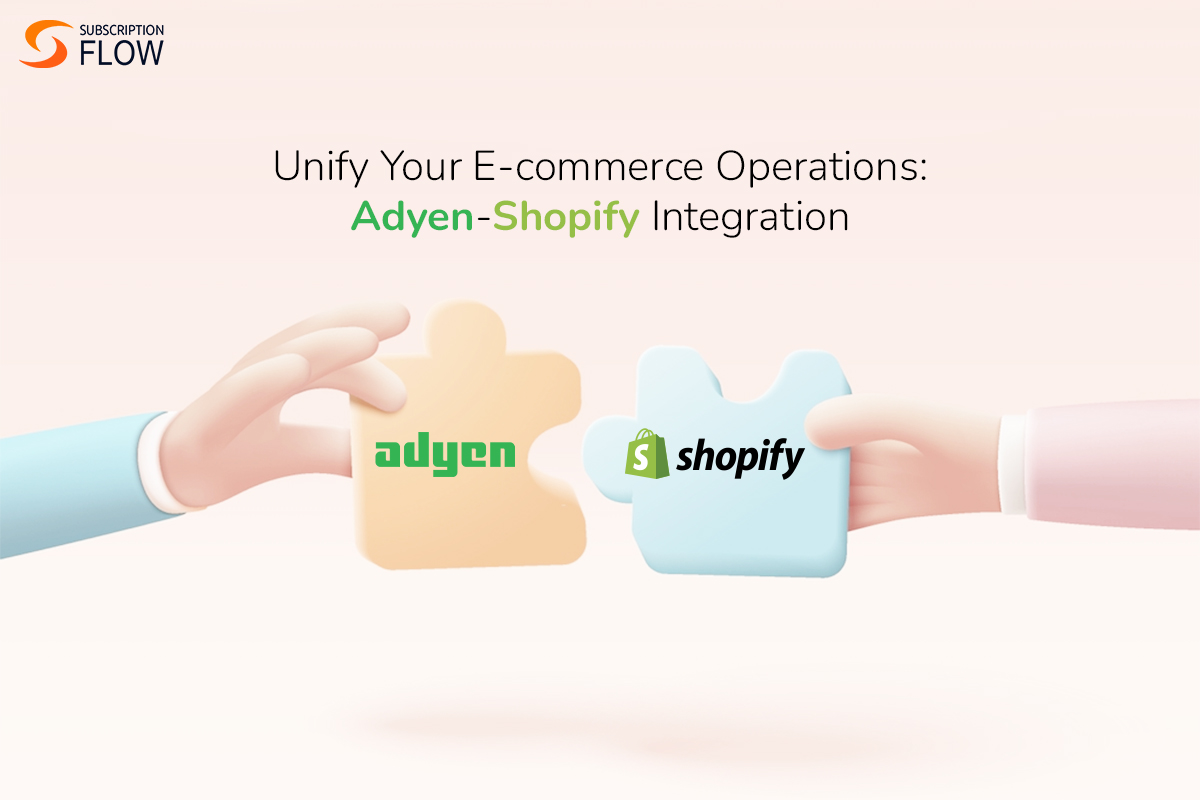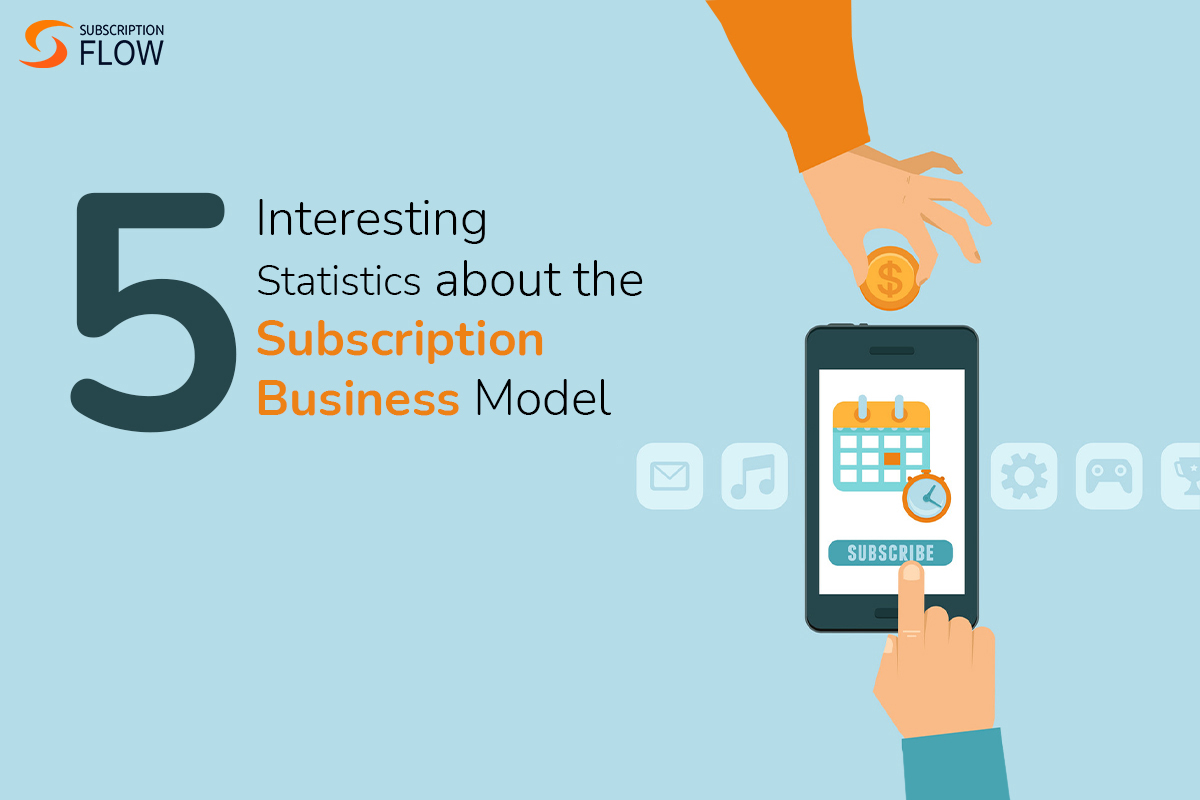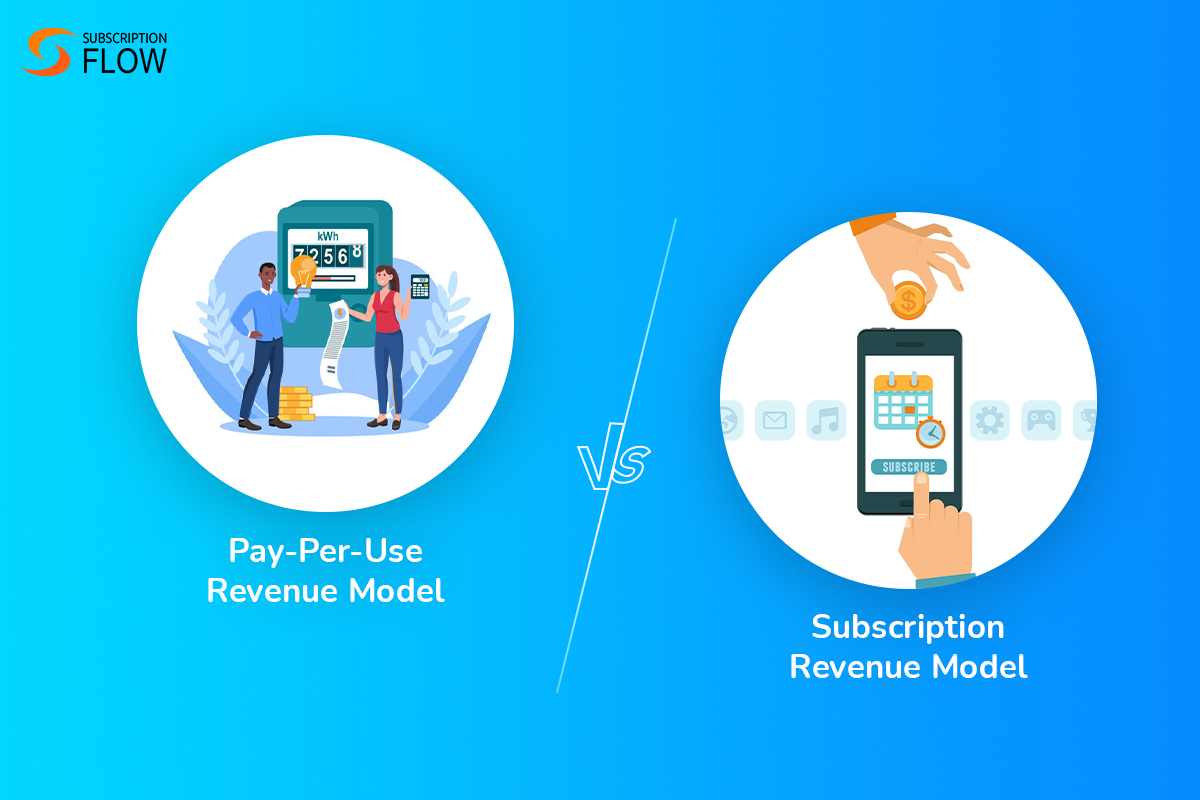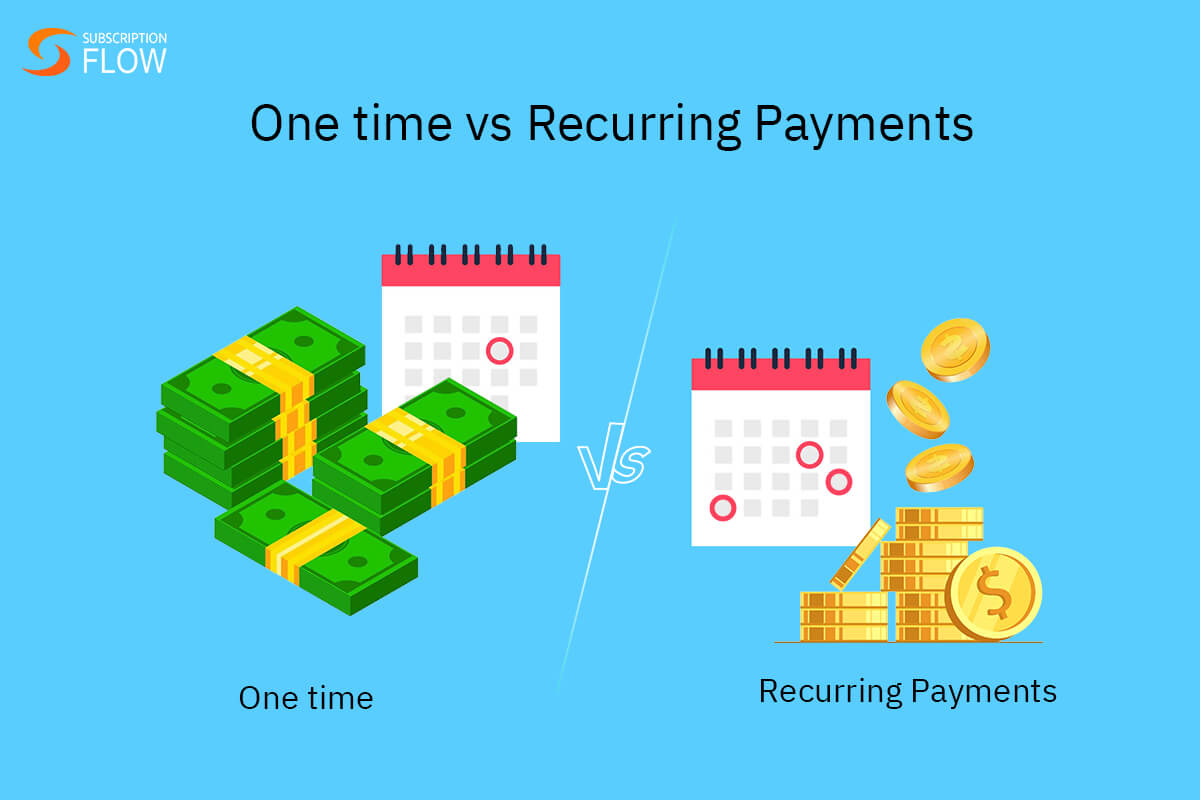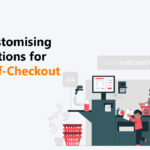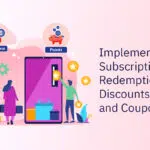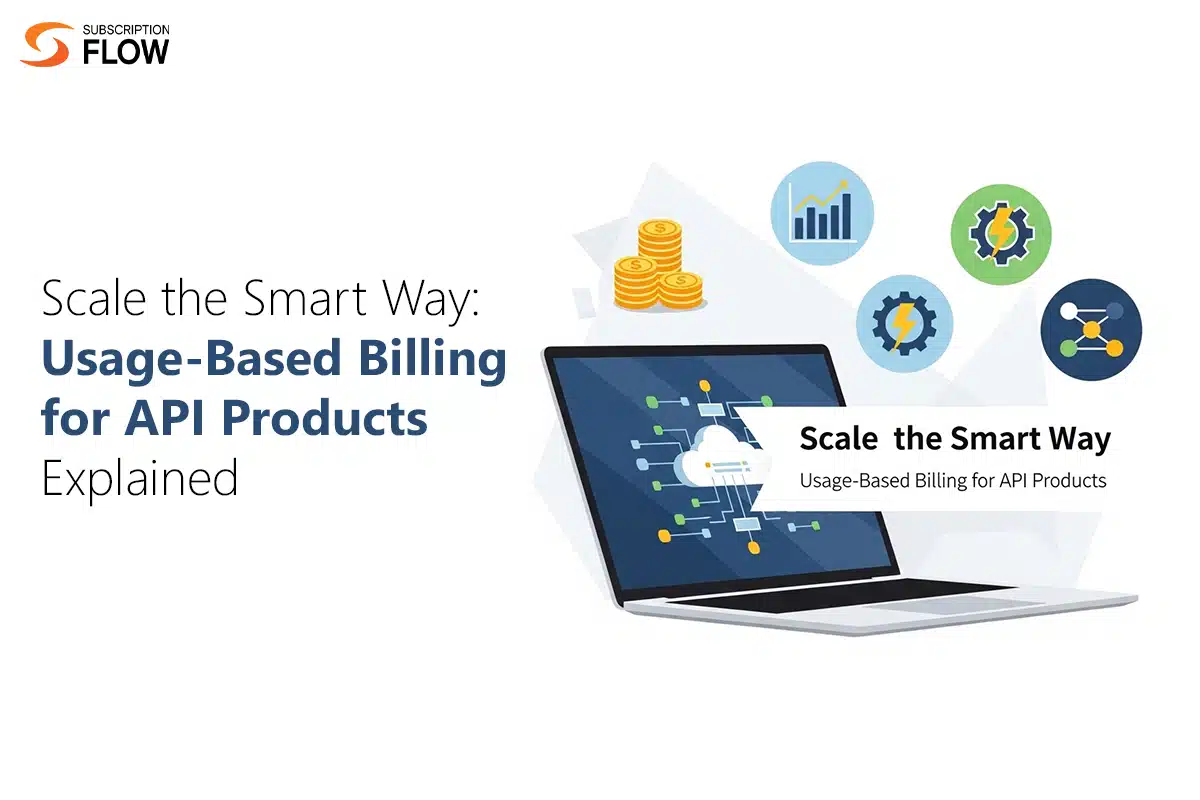
Scale the Smart Way: Usage-Based Billing for API Products Explained
APIs are the backbones of virtually every digital service available today. Whether it is generative AI, SaaS platforms, ecommerce applications, or any digital industry you can think of—APIs play a central role in how they operate. Significant as APIs are for sustaining businesses, selling them effectively is just as complicated.
Companies looking to sell API products to B2B clients need the assistance of a powerful billing platform. Legacy systems, and homegrown solutions aren’t cut out for that. Their billing solutions are outdated, and not designed for dynamic services. This hinders scalability and adds manual workload.
Usage based models are now offered by modern billing software that can record accurate consumption levels and generate accurate bills. Let’s learn how usage based billing for API products makes monetization effective. Let’s also discuss some of its best practices.
What is Usage Based Billing for API Products?
Usage based billing for API products means charging customers according to their API service consumption. Think about electricity bills. They rely on usage metering devices to measure a house’s electricity consumption. API product bills follow the same logic.
Since API services are dynamic, their usage varies dramatically from customer to customer. Hence, companies cannot assign them a static charge that each customer has to pay. If they do so, that would not only make billing unfair, but would also neglect the price to value ratio.
That’s why API providers need to bill according to usage. How the usage is measured and monetized depends upon the service type. There are several usage-metrics that are used to measure consumption today. Some of them are gigabytes (storage units), API calls, number of emails sent (for marketing platforms), and computing power (for image generation).
Types of Usage Based Billing for API Products
There are mainly two types of usage based billing for API product subscriptions:
- Prepaid Billing
Prepaid billing means charging a customer prior to giving them service access. It involves advanced payments following the regular subscription model. But what do customers get in exchange for their upfront payments? They get a bundle of credits. They can flexibly use these credits to unlock various services or service functions offered by the platform.
This means that in prepaid billing, customers indeed pay upfront like in a traditional subscription model. However, their payments are not directly related to the services being offered. They provide them with a continuous credit access instead, and these credits can be used according to need. This makes this model align with the usage-based billing rules.
Since this model bills customers the familiar way, it generates more predictable revenue. However, it can make customer acquisition challenging, as customers have to pay a considerable sum upfront.
- Postpaid Billing
Postpaid billing is also a popular approach to the usage-based model. In this billing type, customers are charged after the completion of their service periods. Let’s suppose a B2B client has subscribed to a generative AI platform. They follow a monthly subscription, and are assigned invoices only at the end of the month. Their total charges represent the value they derive from the service each month.
In this way, postpaid billing clarifies charges, and customers can relate them with their usage more easily. This model also makes customer onboarding easier, as they don’t have to pay anything upfront. However, this freedom can also be abused at times, and can attract problem customers making payment collection difficult.
To avoid that from happening, some businesses implement a hybrid model where their customers pay small fees upfront as flat subscription fees. This encourages customers to complete their service period, and decreases revenue losses.
Why Usage Based Billing is the Best Match for API Services?
These are the reasons why API providers must sign up for a usage based billing software:
- To achieve scalability
API providers can leverage this billing system to make scaling effortless. They can cater to customers with varying consumption levels. If customers’ consumption grows overtime, that can also be managed without operational hiccups. This allows businesses to grow without worrying about tracking excess or micro-usage. Customer payments are managed accordingly.
- To charge fairly
Making billing fair is an important task for gaining customer trust. Billing becomes fair when a service’s delivered value aligns well with its cost. Usage based billing makes it possible, as the billing system produces invoices that match each customer’s unique usage level.
- To promote natural usage
Standard and even tiered plans don’t always satisfy customers. They can include a lot of features that customers don’t need. And hence subscribers end up paying for a lot more than they actually use.
Usage based billing promotes natural usage, whether it follows the prepaid or the postpaid model. Customers can increase or decrease usage willingly. They aren’t forced to utilize what they don’t want.
- To retain customers
This billing model is effective for customer retention, as it turns billing into a retention strategy. Customers perceive charges as fair, they can control their usage and even charges to a large extent, and they can onboard a service more effortlessly. All these factors encourage them to stay committed to their API product subscription.
- To stay competitive
The usage based pricing model is gaining popularity for versatile API services. To not implement this model and stick with traditional billing practices is to stay behind in the competition. Assigning unchanging prices to API products cuts short their revenue generating potential too.
Why Usage Based Billing for APIs Can Be Challenging?
These are some major challenges API providers can face when monetizing their products:
- Requires real-time metering
Customer usage needs to be tracked in real-time, as API services are cloud-based. This is only possible with a system that specializes in usage-based billing. If a business overlooks some portion of usage due to an inefficient system, it will generate an incorrect bill.
Moreover, its billing system needs to produce consistent usage reports for both businesses and customers. If a business has a customer’s usage record, but that is different from what the system shows to the customer, it can lead to dissatisfaction and mistrust.
- Needs precise calculation
Billing calculations need to be free from all mistakes. These mistakes include micro-errors and random round offs as well. Even such tiny errors can impact the overall bill significantly, especially if they are added up. Usage metrics require careful billing and a reliable billing platform to carry that out fast.
- Recurring invoices can be unpredictable
Assigning customers an invoice after every subscription cycle, such as monthly, is practical. It is easy to follow for both businesses and customers. However, in the pay as you go or usage-based scenario, recurring invoices can sometimes cause the business damage due to their unpredictability.
The usage of API products can be very unpredictable at times. It may exceed beyond the expected limits or might fall below the appropriate levels. When the consumption levels fall dramatically, or become almost non-existent, businesses face revenue losses.
They still have to invoice the customer at the end of the month, but because their usage is negligible, their charge is too. And payment processing fees for such micro charges can take a toll on the business’s profitability. It will essentially be spending more on transaction and invoice generation costs than it earns.
Similarly, when a customer’s usage exceeds beyond limits, their charges pile up high too. They use more than the recommended consumption percentage, creating a great liability on the business’s balance sheet. The business has to pay for all the operational costs in advance while gaining nothing until the customer’s billing date arrives.
This can be risky, as payments might not always go as smoothly as planned. If payment failure or any other operational error happens, the loss would be simply too hard to absorb.
- Usage can exceed predefined limits
Businesses need to set up a strategy for customers whose usage goes beyond the recommended threshold. They have to decide whether to restrict their service access, give them warning notifications, or charge them extra for excess use. If limits are not defined properly, it can lead to deliberate service abuse, and create great financial liabilities.
- Customers require transparency
API providers shouldn’t be the only ones monitoring usage. They should also allow customers to track theirs so they can control it better. After all, more usage means more charges for them. Hence, any attempt at obscuring customers’ actual usage from them can lead to surprise charges, and cause mistrust.
- Payments can become complicated
Payment calculation based on usage can get very complicated, as it often involves more than one type of charge. If the billing is prepaid, then it includes standard credit charges and also additional credit charges where applicable. If customers are being invoiced in different currencies, then currency conversion charges become relevant as well.
If the billing is postpaid, then businesses need to ensure timely payment processing, handle failures, and deal with overage charges, among other things. In short, billing isn’t as straightforward as it is in regular subscription transactions. Expert solutions are required.
Best Practices for API Usage Based Billing
To make the most out of their API product offering, businesses need to ensure an effective usage based billing setup. They can refine their monetization strategy by following these practices:
- Choose Appropriate Billing Metrics
Selecting the right usage metrics is important for establishing a clear value to price connection. Ensure that you define those factors as metrics which actually provide clients with some value. Otherwise, charging for something impractical is unfair, and can cost clients considerable sums.
Let’s take the example of a generative AI model. If the model provider charges clients per API call, the charges can be quite superfluous. Why? Because all API calls do not derive results. Some of them can fail due to network connection or system overload. Moreover, they might also be used for the most basic of purposes, such as confirmation, or testing, or even thank-you prompts.
Such API calls don’t provide the client with any real value. So if they are charged on the basis of independent API calls, it can be quite illogical. Therefore, the provider can charge based on API call batches instead. One batch can include 500 API calls.
This way, the price to value ratio can be much clearer for clients, and bills can be more predictable for the business too.
- Define Usage Limits and Overage Rules
Some services require predefined usage rules, because their excess consumption can cost businesses huge liabilities. To handle this, businesses can sell subscription plans that limit usage to certain threshold (e.g. 10,000 API calls per month).
To add more flexibility to their plans, they can clearly communicate the recommended usage, and charge extra for overage. How much usage categorizes as overage, and how much charge it incurs should all be communicated to customers effectively.
- Leverage Threshold Invoicing
In cases where recurring invoices create unpredictability for businesses, threshold invoicing can be utilized. In this invoicing type, the customer is charged only after their usage reaches a certain threshold. They are not simply charged on a monthly basis.
For instance, clients can be charged when their usage reaches 1000 API calls. This prevents both micro charges and huge deferred revenue amounts. It also makes payments predictable. However, this invoicing can also be quite complicated without a smart billing platform.
- Send Automatic Usage Notifications
When customers’ usage goes beyond predefined limits, they can be informed immediately. They can be sent a notification warning them of increasing usage, and the increased charges they can expect. This helps keep usage in check. It is also helpful for clients who tend to use more without realizing, and incur unexpected charges as a result.
- Show Consumption in Customer Portal
It is a great practice to offer customers their own portals where they can keep an eye on their service usage. This also helps prevent excess usage, and promotes billing transparency.
Moreover, this option is better than sending notifications to customers repeatedly to inform them of their usage levels. Frequent notifications can become annoying, and can also be missed by clients.
- Use Advanced Billing Software
It is important to sign up with expert usage-based billing software like SubscriptionFlow to automate key payment tasks. This software has in-built real-time metering capabilities. It also generates and assigns invoices on its own, adjusting each customer’s charges precisely according to their usage.
How SubscriptionFlow Enables Effective API Product Monetization
Without a robust billing solution in place, offering usage-based billing for API products is a futile practice. Software like SubscriptionFlow ensures that all billing takes place efficiently, and accurately. These are some solutions it offers API providers with:
- Metering that can be customized
Select usage metrics based on your strategy and API service type. Flexibly assign charges to the chosen metrics, and start billing. SubscriptionFlow captures accurate service usage and calculates charges accordingly. It supports both pre- and postpaid billing models.
- Support for hybrid billing
Billing doesn’t have to be based entirely on usage. You can easily set up a combination pricing structure. For instance, you can combine flat fees, usage-based charges, and volume discounts into one plan.
- Customer wallets for credit storage
Clients are given access to self-service portals that have in-built wallet functionality. In prepaid plans, they can buy credits and store them in their wallets. They can easily monitor their wallet balance, used and additional credits. Businesses can also transfer free credits on special occasions or for loyalty based programs.
- Real-time usage tracking for customers and businesses
Customer portals can also be utilized for usage tracking making billing transparent. Customers can keep their charges in check, and avoid unintentional overage. Businesses also get to access intuitive dashboards that keep them posted about customer usage, and other subscription metrics.
- Easy integration with API Products
SubscriptionFlow is known for its smooth integration capabilities. It integrates seamlessly with your API product, and fetches usage data from there in real-time.
- Payment Retry Logic
Having a powerful dunning system in place is a must, especially for post paid usage based billing. It helps businesses recover failed payments, and prevents revenue leakage. SubscriptionFlow offers features like payment retries, payment reminders, dunning emails, and grace periods to speed up the collection of pending funds.
Sign up with SubscriptionFlow now to avail all these features, and a lot more. Bill for API products the right way, and scale confidently.


